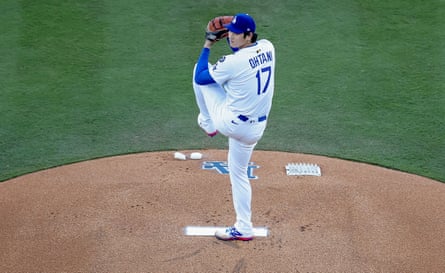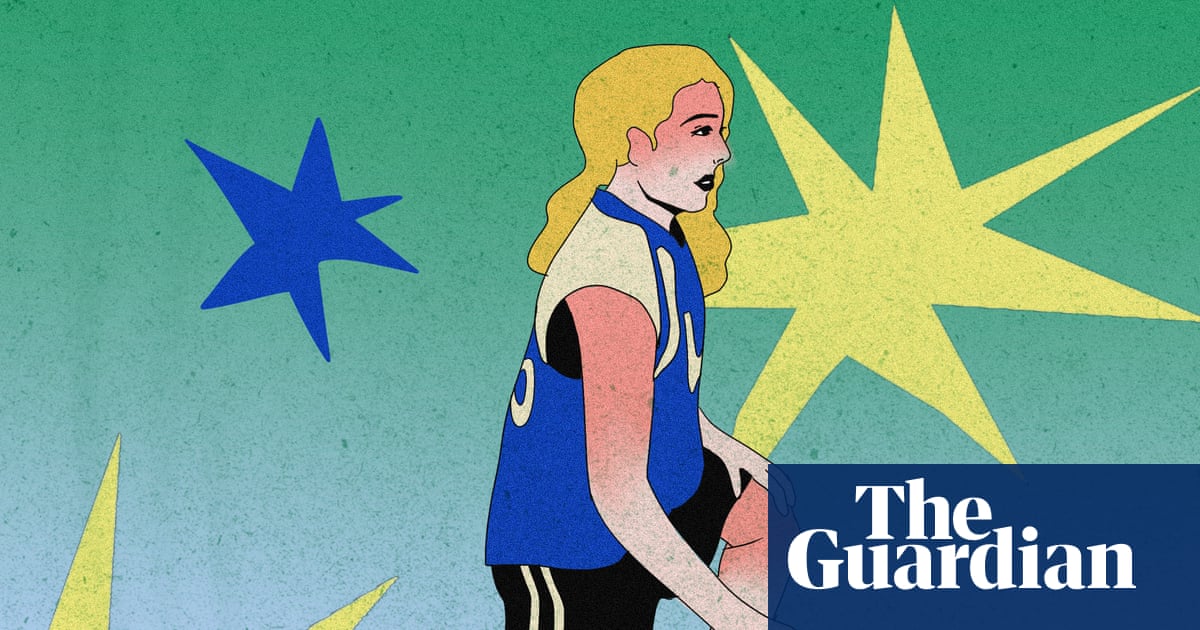Even Shohei Ohtani’s teammates struggle to find the right adjectives to describe him; ones that express how good he is while emphasizing how unlikely his existence is in the first place.
After Monday’s Game 3, when Ohtani became the first player in postseason history to reach base nine times in a World Series game, Dodgers first baseman Freddie Freeman opted for “unicorn,” one of the more common Ohtani descriptors. Starting pitcher Blake Snell, meanwhile, put things simple and plain.
“He’s going to do spectacular things all the time,” Snell said. “And it’s just going to be normal for him.”
Game 4 of the World Series, though, proved that even a spectacular unicorn can be fallible. On Tuesday, Ohtani allowed more than three runs in a start for the first time since August and didn’t record a hit in the Dodgers’ 6-2 loss to the Toronto Blue Jays to tie the series at two games apiece.
That a pedestrian performance like this can surprise is further evidence of how Ohtani has completely reset the standards of what a professional baseball player can achieve. After Tuesday’s game, Dodgers manager Dave Roberts admitted that even he can get carried away.
“It’s part of being a fan and seeing great things from great players,” Roberts said. “So every time he steps up I expect great things to happen, and maybe unfairly.”
Even in Wednesday’s loss, Ohtani’s six strikeouts gave him the record for most for any player in their first three postseason starts (25, surpassing James Paxton’s record of 20 in 2019). The 15 swings and misses he induced from Toronto hitters put his whiff rate – the percentage of pitches that opposing hitters swing and miss – at 42%, higher than any other starting pitcher in the 2025 postseason. And his outing came just 18 hours after he was the first player in 119 years to have four extra-base hits in a World Series game.
That, perhaps, is a reminder of just how special the 31-year-old is. When he signed with the Los Angeles Angels in 2018, his arrival was expected to generate a new generation of two-way players, who would excel as pitchers and batters. Instead, his phenomenal success has only highlighted the extreme challenges of staying healthy (Ohtani has missed two full pitching seasons with elbow injuries) and the mental preparation required to battle big league pitchers and hitters. As a result, Ohtani may have inadvertently killed the two-way player, at least while he is the standard bearer. “[Ohtani] came in and he’s like the Babe Ruth of hitting and pitching,” Kansas City Royals pitcher Michael Lorenzen – a former two-way player with seven career home runs – told the Athletic in August. “How much value is there in someone who’s just above average at both? I think if that’s proven by someone that it’s really valuable, then a lot more people will do it.”
But Ohtani should not be dismissed as a curve breaker because of his seemingly divine talent. Before he signed with the Angels, Ohtani told Sports Illustrated that the most mental stress he suffered was not from the pressure of starring at two positions, but from fans and pundits who believed that his insistence on hitting and pitching indicated he was either selfish or unserious. Even for those who think Ohtani’s legend is overblown, it’s hard to consider him unserious about anything: as an adolescent, he scarfed “dozens” of bowls of rice to try and add bulk to his lanky frame and created detailed life goals in spreadsheets. He is so meticulous about his sleep that he reportedly travels with his own mattress and pillow to ensure he gets his preferred 10 hours per night – and another two before gametime. Asked how he felt about starting the next day after his historic Game 3 performance, Ohtani said simply, “I want to go to sleep as soon as possible.”

Those small parts of the “routine” are among the most common ways his many admirers try to explain Ohtani’s greatness. Ex-Dodgers teammate Chris Taylor remembers Ohtani pausing minutes between individual sprints and practice swings to try and create game-like visualizations so he could improve his subsequent reps. When asked to explain Ohtani’s uniqueness to a casual observer, Roberts described Ohtani as two specialists rolled into one, able to summon the best from each side of himself.
“[These are] crazy expectations, probably unattainable for any person,” Roberts said before Tuesday’s game. “And then to kind of have the body and mind work together to perform at the highest level with all eyes on him. I just don’t think there’s a comparable if you’re talking about one human being.”
Whether it’s his appeal as a two-way player or his mammoth home runs and scorching line drives, Ohtani has galvanized those who follow his career. His jersey was the best-selling across Major League Baseball for the third consecutive season and has spurred a noticeable uptick in Japanese tourism to Los Angeles. Another athlete who shone in multiple disciplines – NFL hall of famer and nine-year MLB veteran Deion Sanders – said it will be decades until another player like Ohtani arrives.
Until then, the world will need to work on some new words to bring Ohtani to life. After all, unicorns are not real, but Ohtani is.

 3 hours ago
6
3 hours ago
6

















































